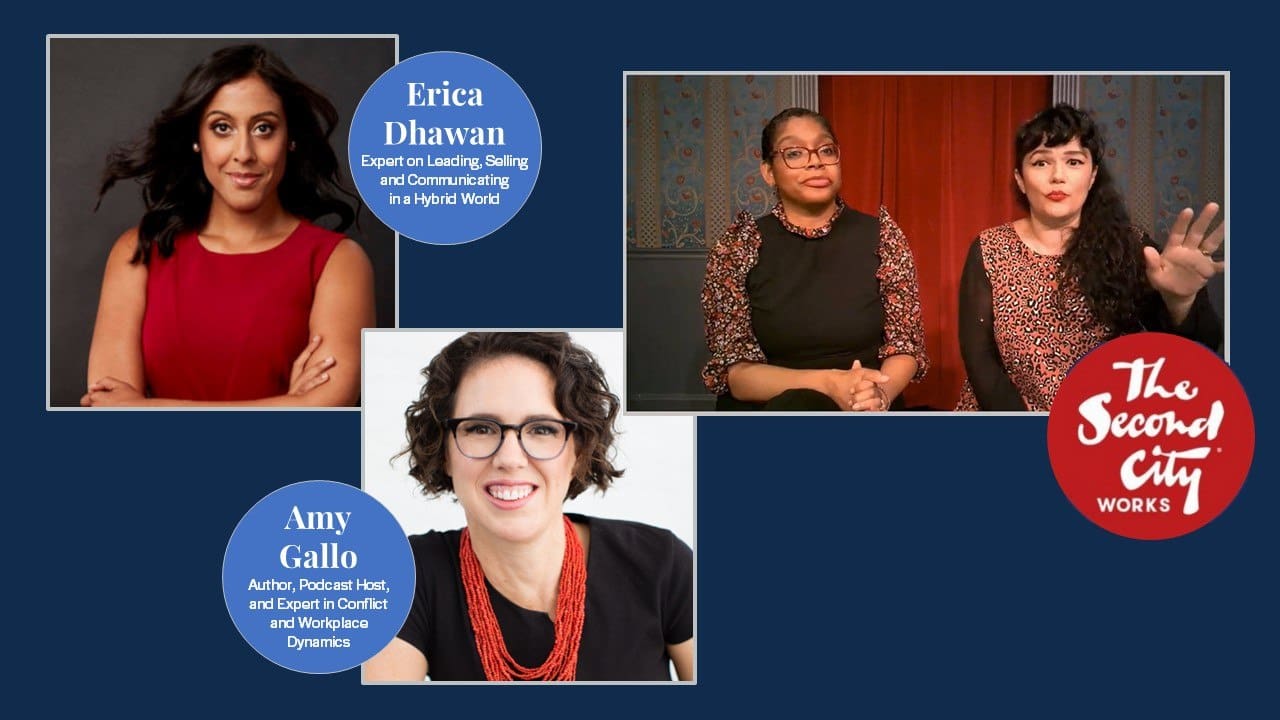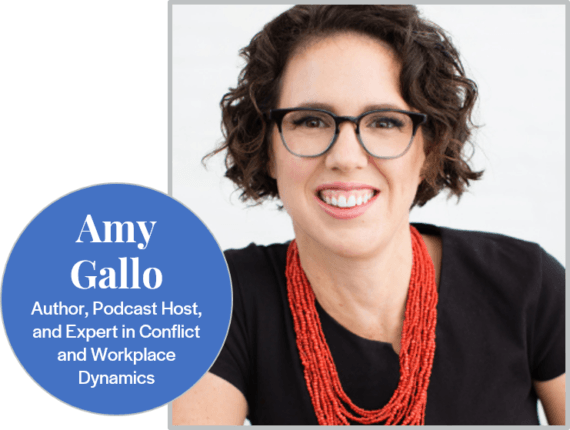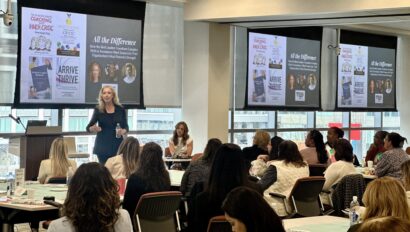Research & Insights
Practical Tips to Help You Be an Effective & Inclusive Leader

Renowned experts unpacked critical topics facing today’s leaders and offered practical, actionable tips and tools you can start using today to be a more effective and inclusive leader, at the 43rd Simmons Leadership Conference.
 Mastering the Intricacies of Digital Body Language
Mastering the Intricacies of Digital Body Language
More than ever, we have to be mindful of our Digital Body Language—the cues and signals we send in digital communication that clarify the subtext of our messages. Erica Dhawan, an authority on Digital Body Language, provided a wealth of practical, easy-to-implement strategies to boost engagement, efficiency, and collaboration in a hybrid environment and offered actionable tips to elevate a culture that promotes connection and inclusivity and eliminates proximity bias.
Best Practices for
EMAIL ETIQUETTE
- Reply to an email only if you are on the “To” line. No need to respond if you’re on the “cc” line.
- Subject lines should answer the question: “What I need from you.”
- Be clear about when a response to your email is expected.
- Write and answer emails with clarity so your message conveys exactly your point and clearly articulates the ask.
- Practice thoughtfulness over hastiness. Take the time to answer thoroughly, for both grammar and clarity.
Best Practices for
MEETING PROTOCOLS
- Send a meeting agenda in advance with expectations and follow up with meeting notes.
- Set expectations about cameras (on or off) in the calendar invitation.
- Remove proximity bias by having both an in-person and remote host and have them co-facilitate the meeting to remove potential disengagement of remote attendees.
- Leave time for thinking and processing when you ask a question and use the virtual chat tool during a hybrid meeting for everyone to brainstorm ideas and document their thoughts before you discuss as a group.
- For new hires, send them recordings or notes from previous five team meetings to expose them to your culture, priorities, and environment.
 Navigating Difficult Conversations
Navigating Difficult Conversations
Amy Gallo provided keen insight on how to identify sources of conflict in work relationships, manage our emotions in heated moments, and prepare for and engage in difficult conversations with empathy, kindness, and compassion.
SUCCESSFULLY
NAVIGATING THE CONVERSATION
- Don’t focus on the risks of having a difficult conversation. Instead focus first on the risks of not having the conversation. Assess the costs of inaction.
- Think about the other person and put yourself in their shoes. What do they want? What are they thinking? What do they care about? This helps approach the conversation as a collaboration, not a confrontation.
- Establish what you both want to achieve in the conversation. Try to find a shared objective, which facilitates achieving consensus.
- Manage the other person’s emotions. Allow the other person to vent but don't react to everything they say. Decide what’s worth engaging in and what’s not.
- When a co-worker makes an inappropriate or unfair statement, ask them these questions: “What did you say?” Asking the person to repeat the statement often helps to make them realize the impact of what they said. “I know you to be someone who cares about equity, and what you just said implies that women don’t have a seat at the table. Is that what you meant?”
PRINCIPLES FOR
GETTING ALONG
- Remember your perspective is just one perspective. Make an effort to see and hear things from others’ perspectives.
- Be empathetic with yourself and others, which will allow you to integrate your perspective with different viewpoints.
- Beware what biases you are bringing to the relationship.
- In a difficult conversation, invite the other person to critique your idea.
- Instead of viewing a conflict as me vs them, come together on the same side of the table and face the conflict together.
Building Authentic Connections
The Second City has produced some of the most unforgettable satire and influential comedians of the last 60 years. Its pioneering methods inspire mindsets and behaviors that will sharpen our own ability to connect and lead with courage. In their interactive—and entertaining—session, actors from The Second City Works, with the help from our conference co-hosts, Joyce Kulhawik and Kristen Palson, used improv skits and sketch comedy to illustrate how intentional positivity, connection, and inclusion in the workplace foster collaboration, respect, and productivity.
from IMPROV
TO ACTION
- Listen to your audience with empathy, curiosity, and understanding before you offer concerns about budget, resources, and time.
- Listen to understand. Drop your agenda, lead with curiosity, shift your perspective.
- Align word choice and intention so your message is clear.
- Try to avoid answering with “No.” “No” kills ideas and engagement. There is no consensus in “no.” When you must say "no," be clear why it’s necessary.
- Modeling a “yes, and” mindset generates creative ideas, builds consensus faster, and creates a culture where everyone feels more empowered to contribute and more courageous in how they participate.
Next Up:
The next post highlighting key moments from the Conference Engagement will feature four women executives discussing Cultivating Courage and Connection.





